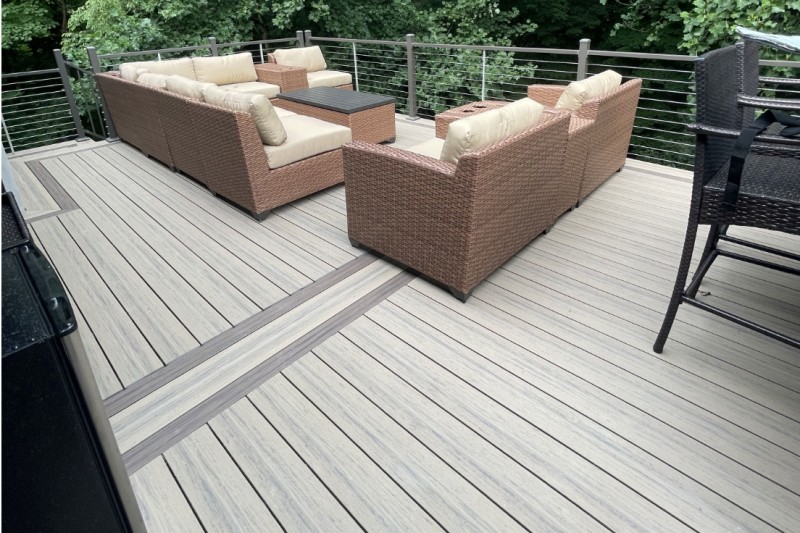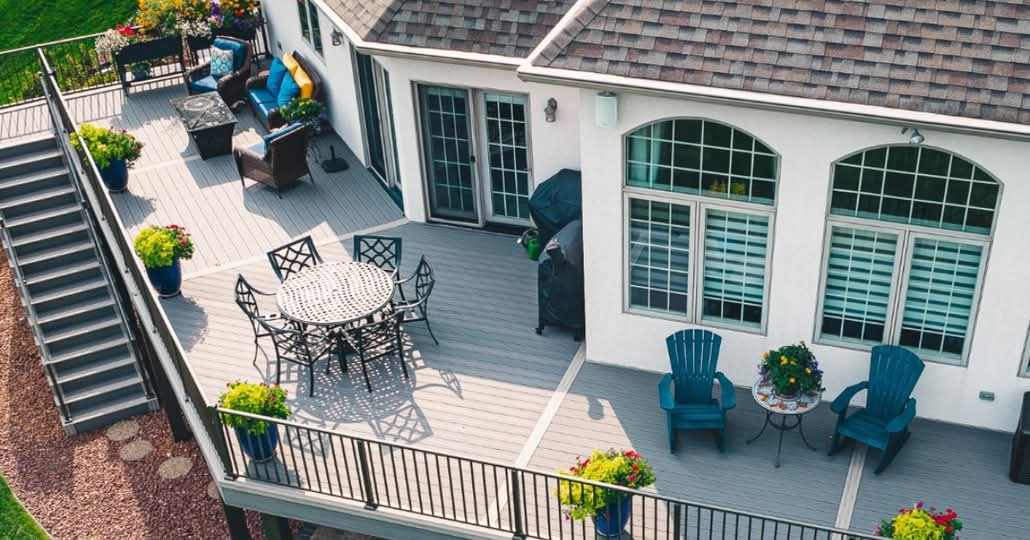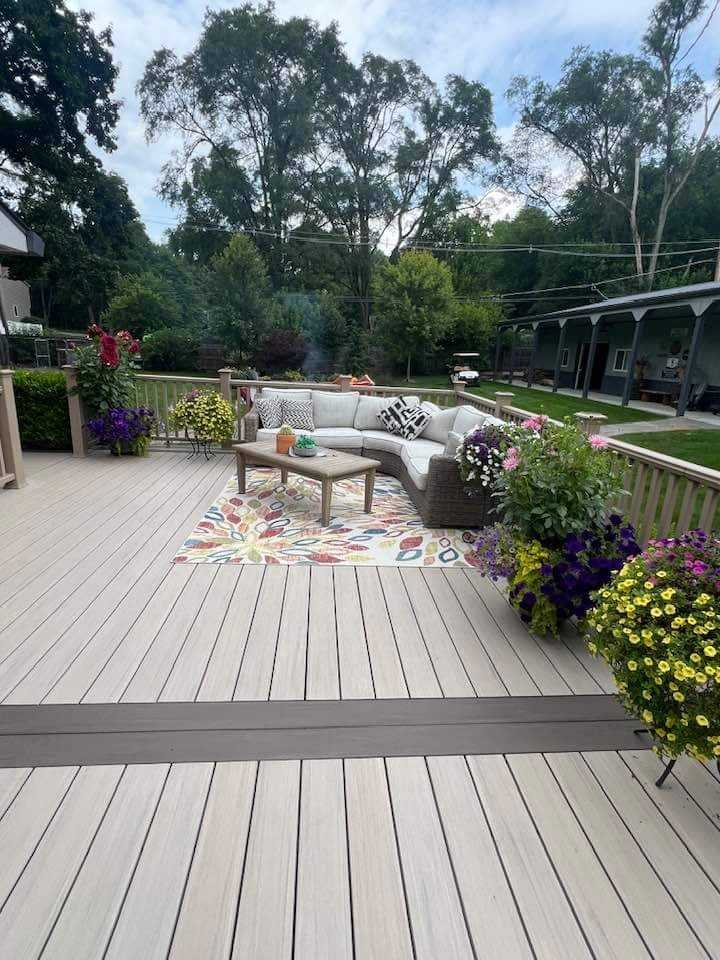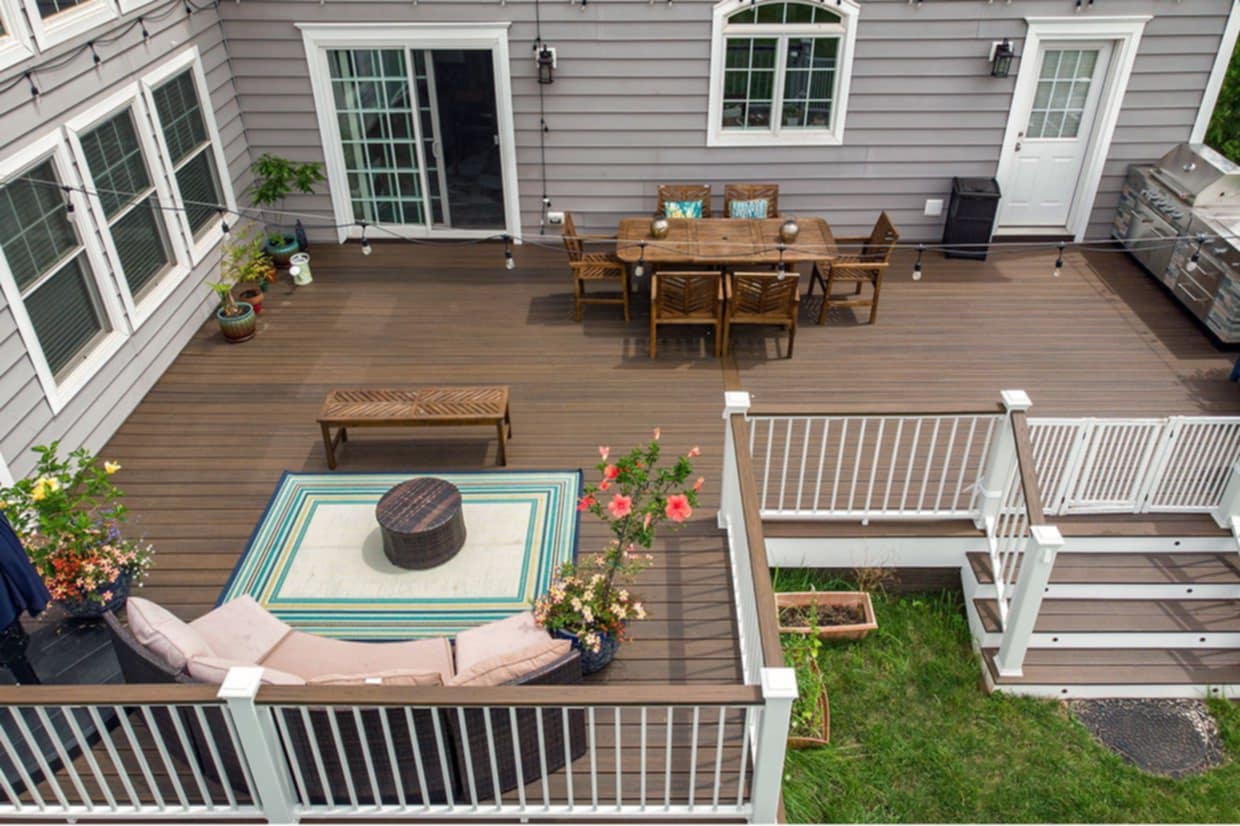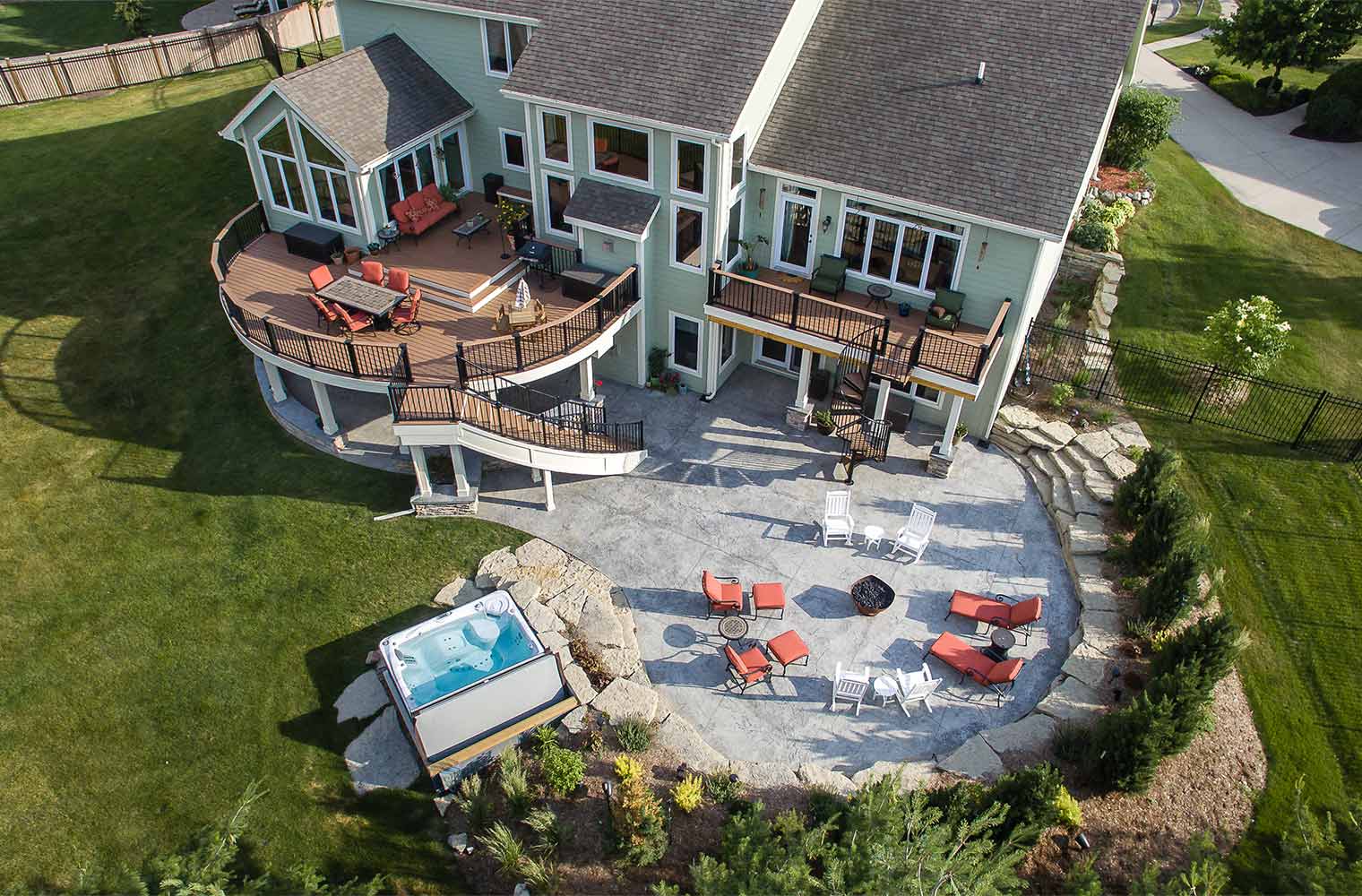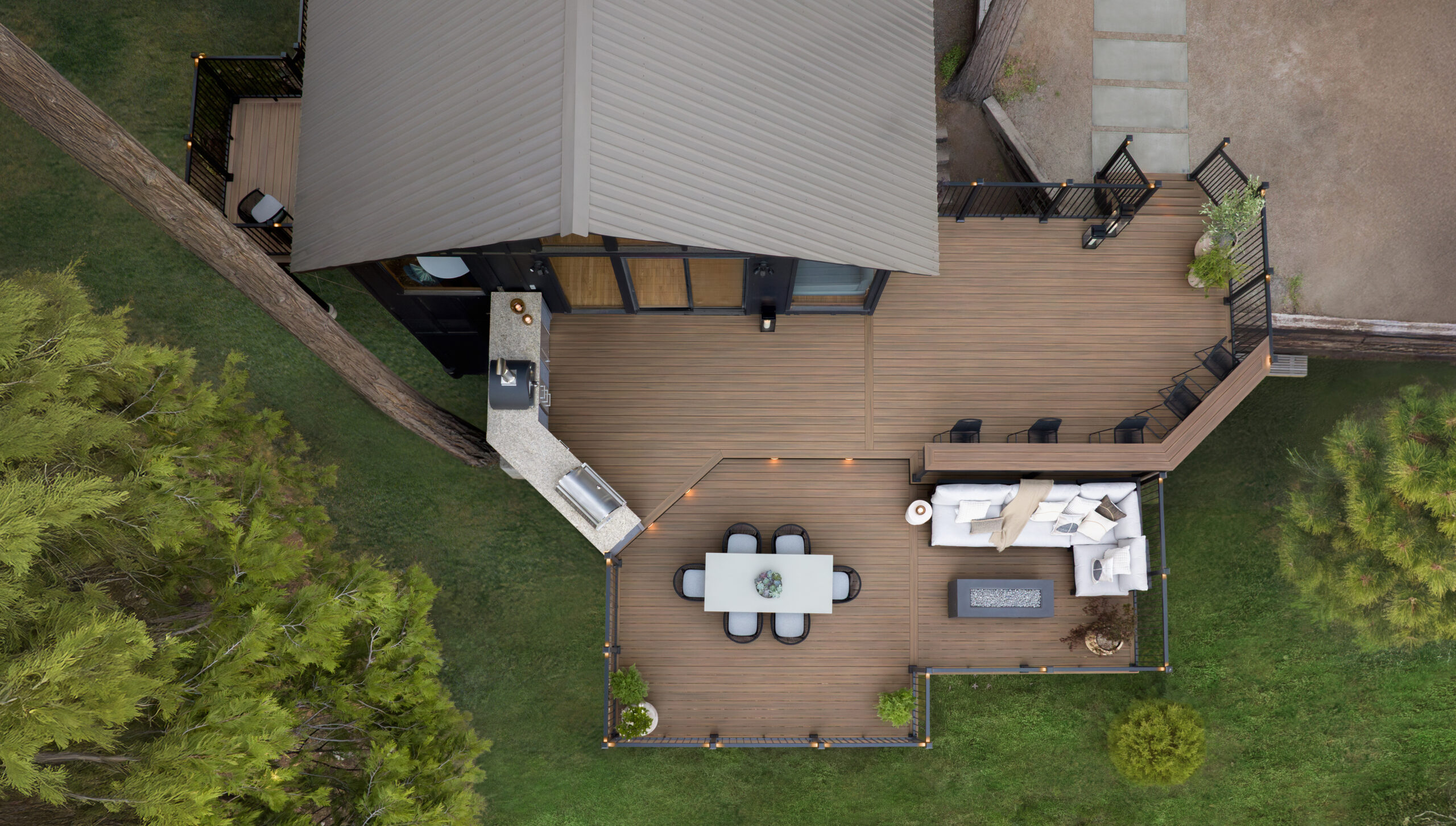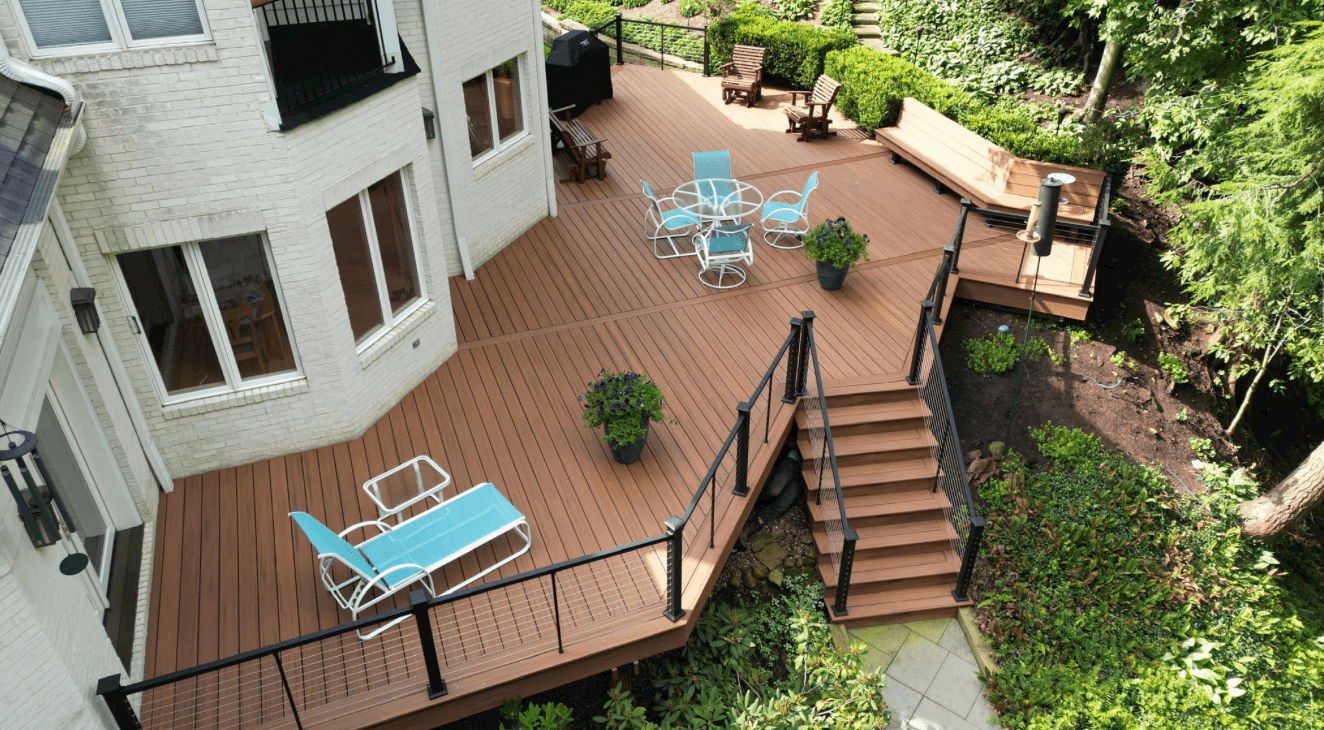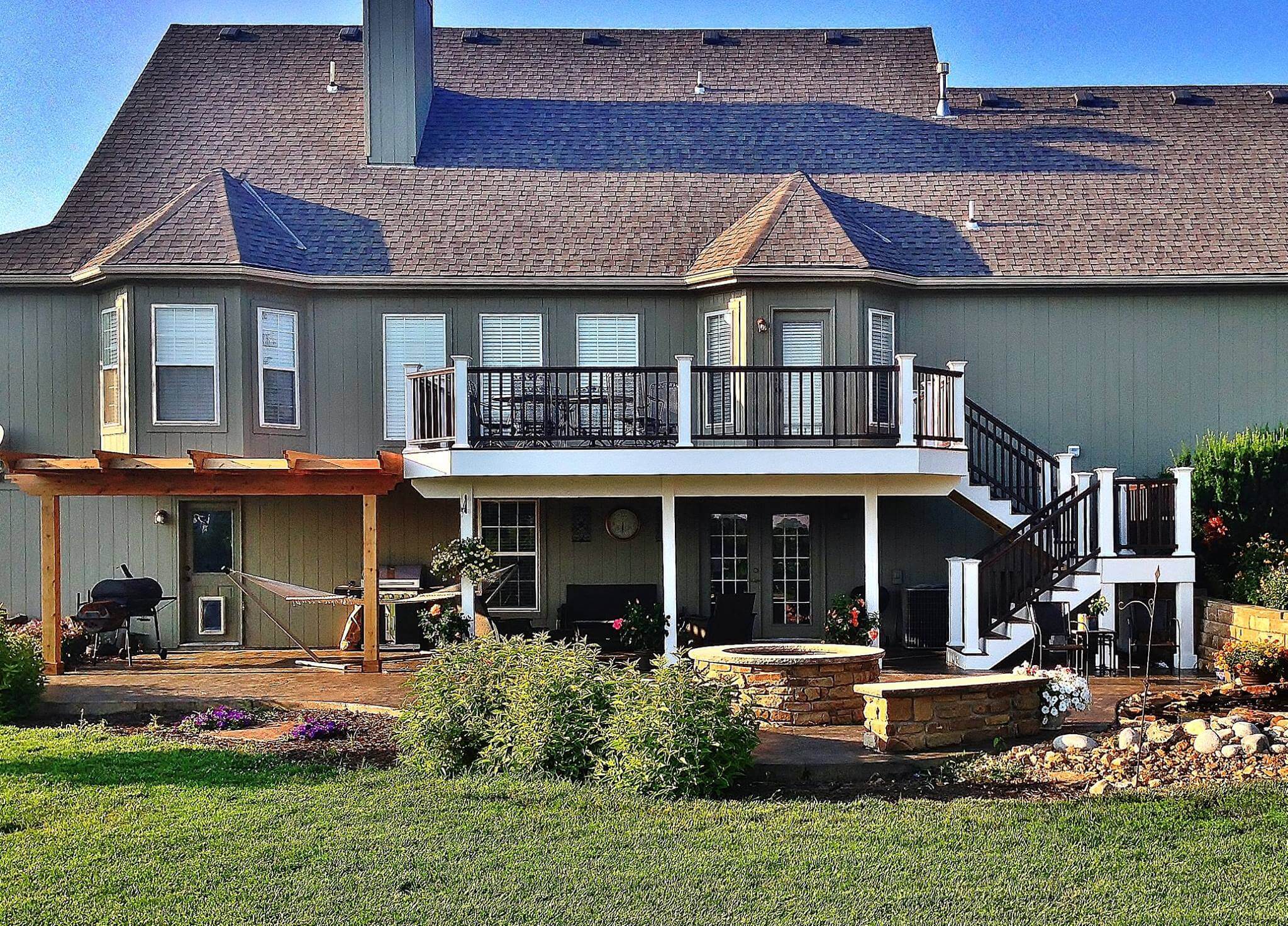Expanding and Contracting of Composite Decking
It’s no secret that all decking expands and contracts. Even the most durable of materials are affected by being permanently exposed to the elements. However, the degree to which decking is impacted depends on a variety of factors: the season, the amount of rain it’s exposed to and changing temperatures can all play a role to varying degrees.
From temperature change alone composite decking will expand and contract, on average, about half a centimeter. That said, it is much less susceptible to change than almost all wooden decking. This is because composite decking is made, in part, out of synthetic materials – mostly recycled plastic. These plastics work well with wood fibers to create strong, resilient decking that lasts.
What causes composite decking to expand or contract?
There are a number of reasons for composite decking expanding and contracting. Heat is number one. Even though it is made up of synthetic materials, composite decking is still nonetheless susceptible to normal thermal expansion: it will therefore expand when the temperature rises and contract when the temperature falls.
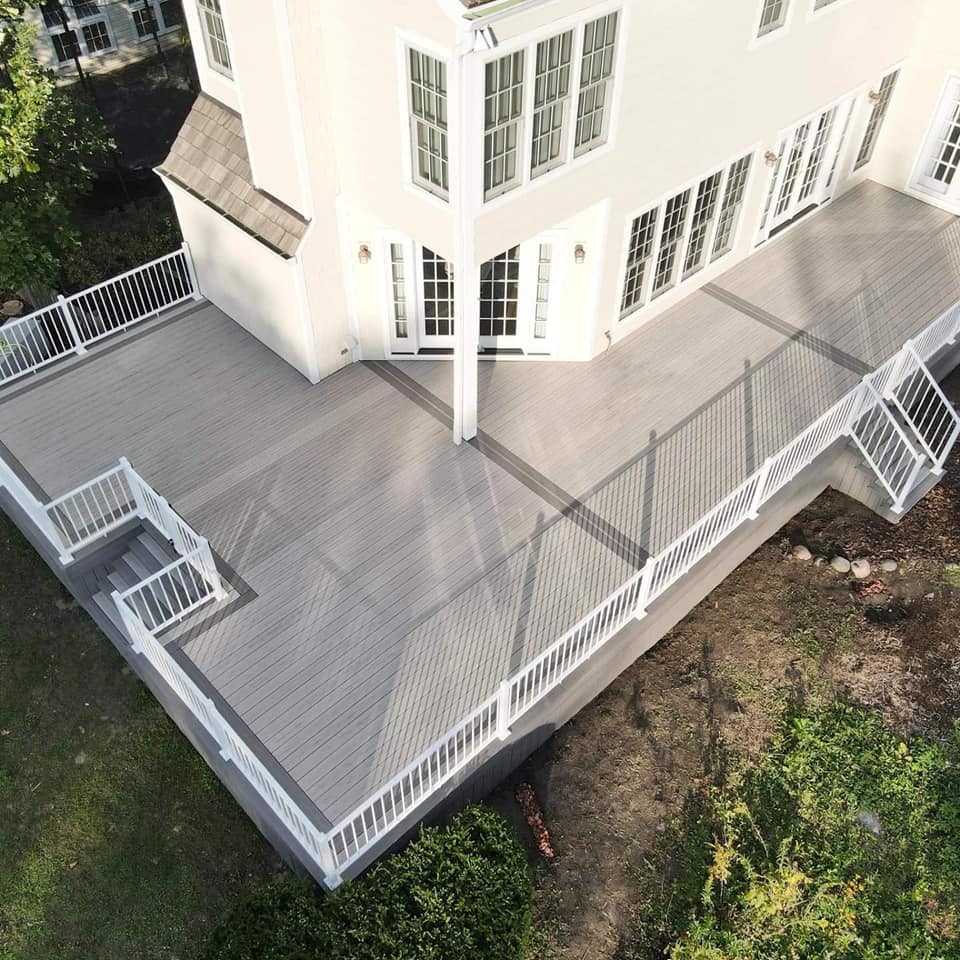
However, unlike wood decking, composite has minimal moisture absorption. Therefore, when building a composite deck, you only need to factor in temperature change and not rainfall or humidity.
This means that composite decking is ideal for water contact. Those made from high-quality decking materials can be installed near, touching or even in water with no consequences.
This is why, in the case of textured boards, they are ideal decking for docks, or around a hot tub or swimming pool.
Leave an appropriate expansion gap
If you’re building a composite deck, you must be especially mindful of expansion and contraction. Leaving an appropriate gap between boards is vital.
That’s because without the right spacing, deck boards can expand and push up against each other in the heat, buckle out of place and even tear out from their fasteners. As a result, you’ll have to replace broken decking or reinstall the boards, which can be both time-consuming and expensive.
When butting end boards together or mounting a decking butt into a post or wall, the vast majority of composite decking brands require you to leave an expansion gap at the end of each board. In most cases this will be around a ¼” (6mm) when the boards butt together.
You will also need an expansion gap between the end of the decking and your picture frame board or transitions. Gaps should also be cut into boards when notching around posts and when the decking butts up to the house wall.
When considering what an appropriate expansion gap would be, it’s important to understand that expansion and contraction are largely limited to the length of the board. Boards don’t tend to expand widthways. That said, you’ll still need gaps between the boards for drainage.
When boards are too close together, water cannot drain properly, nor can air circulate. This means your deck boards will stay wet, potentially leading to structural failure or wood rot.
How much do composite decking boards expand?
On average, over a 16’ board, composite decking will expand and contract 3/16” (around half a centimeter). This applies to several brands, such as Trex, which suggests an expansion gap of ½” (12mm) when abutting boards to walls at less than 40°F (4.5°C). A smaller gap of 3/16” is suggested for between mitre joints and end-to-end joints.
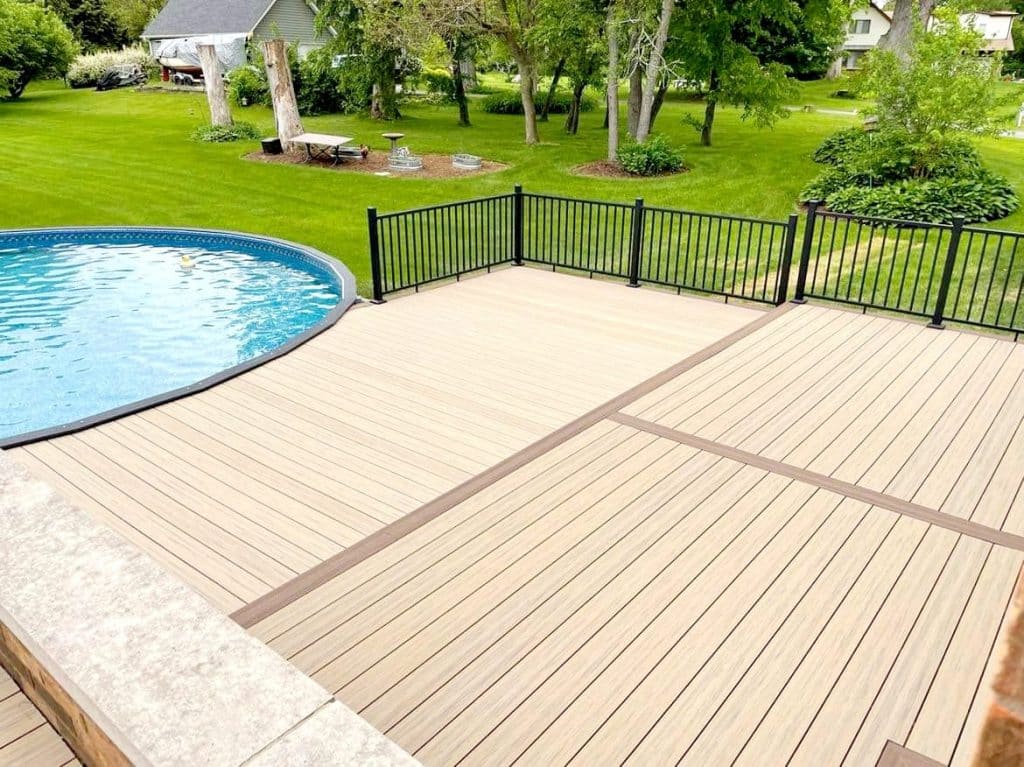
However, the guidelines can vary by brand and decking material, mostly because not all composite decking is wood-based.
Pure PVC decking, such as TimberTech Azek, is the worst offender for expansion.
By contrast, the composite decking with the least expansion and contraction is Deckorators’ mineral-based decking. It experiences virtually no expansion and contraction in the heat. In fact, you could butt Deckorators decking tight together in either minus 8 or plus 80 and it wouldn’t affect the decking in any way.
This provides a lot more leeway for mitre joints, decking inlays etc. as you don’t have to build your design with board movement in mind.
Thinking about a new deck?
Composite decking has many advantages. Not only is it more resistant to water damage, it also requires little maintenance and will last much longer than wooden decking.
Be sure to consider it for your next project, whether a new outdoor space to enjoy the summer light, or for your swimming pool or hot tub.
https://www.google.com/maps?cid=2300364325239903716



